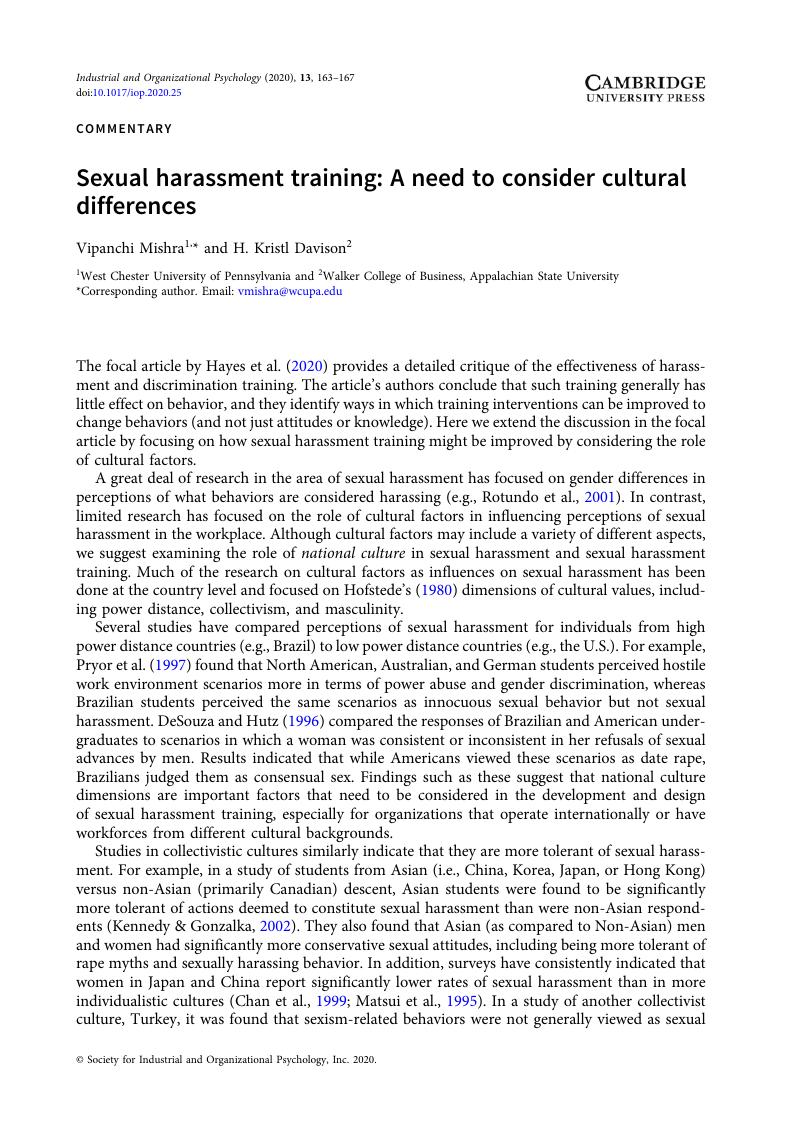Crossref Citations
This article has been cited by the following publications. This list is generated based on data provided by Crossref.
Nash, Meredith
2021.
National Antarctic Program responses to fieldwork sexual harassment.
Antarctic Science,
Vol. 33,
Issue. 5,
p.
560.
Mitsakis, Fotios
Hadjisolomou, Anastasios
and
Kouki, Amairisa
2024.
Customer abuse and harassment in the hospitality industry: the immersion of an everyday workplace crime.
Current Issues in Tourism,
p.
1.
Lewis, Gabriella
2024.
Discussing Sexual Harassment in the Classroom (or Online): An Interactive Exercise.
Management Teaching Review,
Keenan, Charlotte
von Hippel, Courtney
Neall, Annabelle
and
Barlow, Fiona Kate
2024.
Blurred Ideas: How Perpetrator Behavior, Target Response, and Observer Gender Can Influence Perceptions of Workplace Sexual Harassment.
Journal of Interpersonal Violence,



